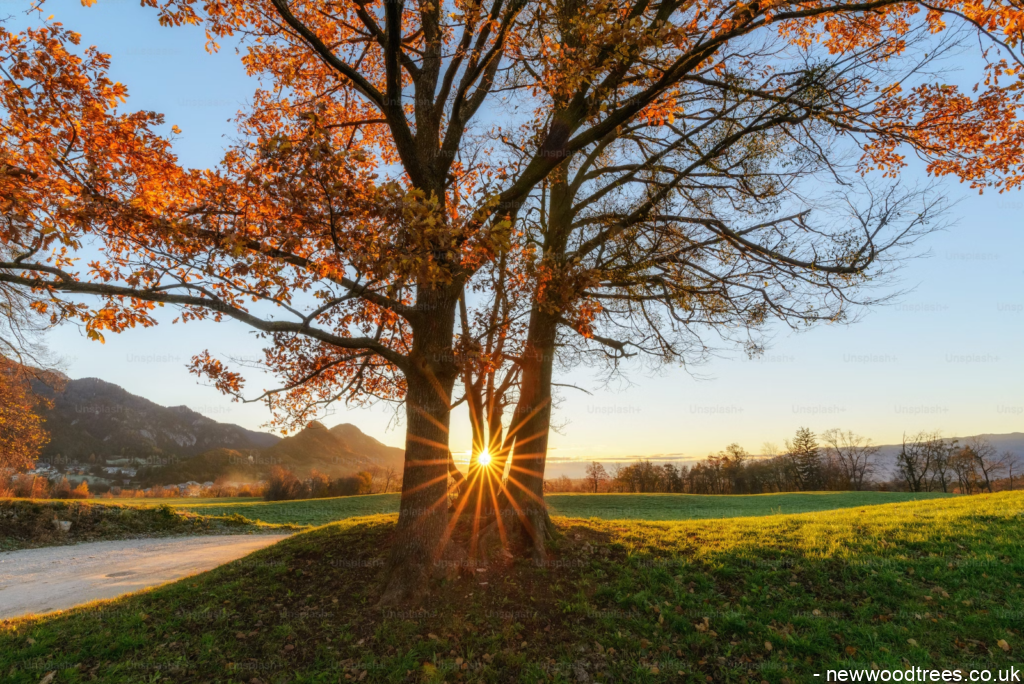
When selecting trees for your landscape, one key decision is choosing a single-stem or multi-stem variety. Single-stem trees grow with one main trunk, aiming for height to compete for sunlight. Meanwhile, multi-stem trees develop several to many trunks or stems radiating from the ground. Also, they focus more on spreading out to occupy lateral space.
Single and multi-stem trees provide beauty, shade, seasonal interest and other benefits. However, their configurations, growth habits and structural needs differ. Therefore, before visiting the nursery, consider whether your landscape would thrive better with the vertical, orderly look of single-stem trees or the voluminous, architectural impression of multi-stem varieties.
Read on to know the difference between the two types of trees.
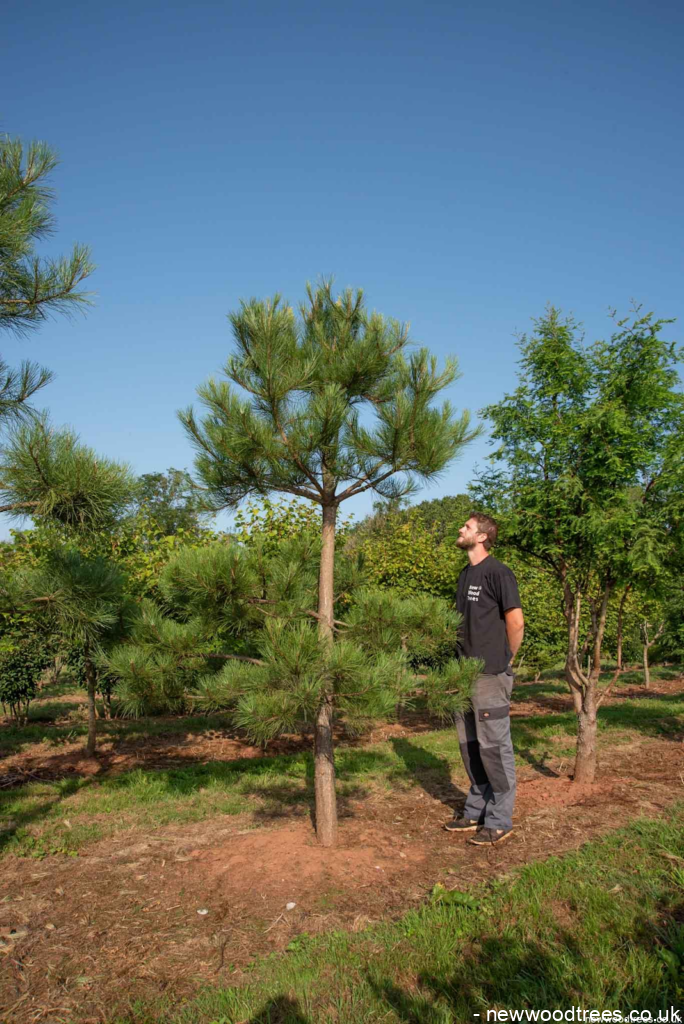
What is a single-stem tree?
Single stem refers to trees with one predominant woody trunk extending from the roots and soil line. These trees channel their energy into achieving height rapidly in youth. Additionally, the canopy shape varies depending on genetics and species – conical, rounded, weeping, pyramidal, or oval.
But regardless of outline, single-stem trees aim their foliage upwards on a singular trunk, not outwards on multiple stems. On the other hand, multi-stem trees such as the multi-stem silver birch tree have branches that diverge gracefully, creating a unique silhouette and contributing to a broader, more expansive canopy.
Common Examples of Popular Single Stem Trees Include:
- Palm: Palm trees are one of the most recognisable examples of single-stem trees. Varieties like the towering coconut palm, bushy date palm, and fan palm have a single straight trunk covered in leaf scars and remnants of old fronds. Their trunks can grow up to 100 feet tall before branching into a crown of large, evergreen leaves.
- Corsican Pine: The Corsican pine is an outstanding example of a single-trunk pine tree species. The Corsican pine (Pinus nigra ‘Maritima’) grows in a dense, cone-like shape, reaching 40 metres tall at maturity. As a conifer pine, it is characterised by its spiny, evergreen leaves in bundles of two needles.
- Italian cypress: Italian cypresses manifest the slim, columnar silhouette of classic single-stem trees. Growing in a perfect cone tapering to a point, they can stretch 60 feet tall yet often reach just 3 feet wide. The narrow shape is emphasised by the absence of branches along the lower portion of the tree’s solitary stem. Instead, whorls of flat sprays adorn the topmost portion of the trunk.
Single-stem trees make tidy accent plants to dot lawns, anchor corners or frame entries. They cast directional shade and elegantly draw the eye upward as they mature.
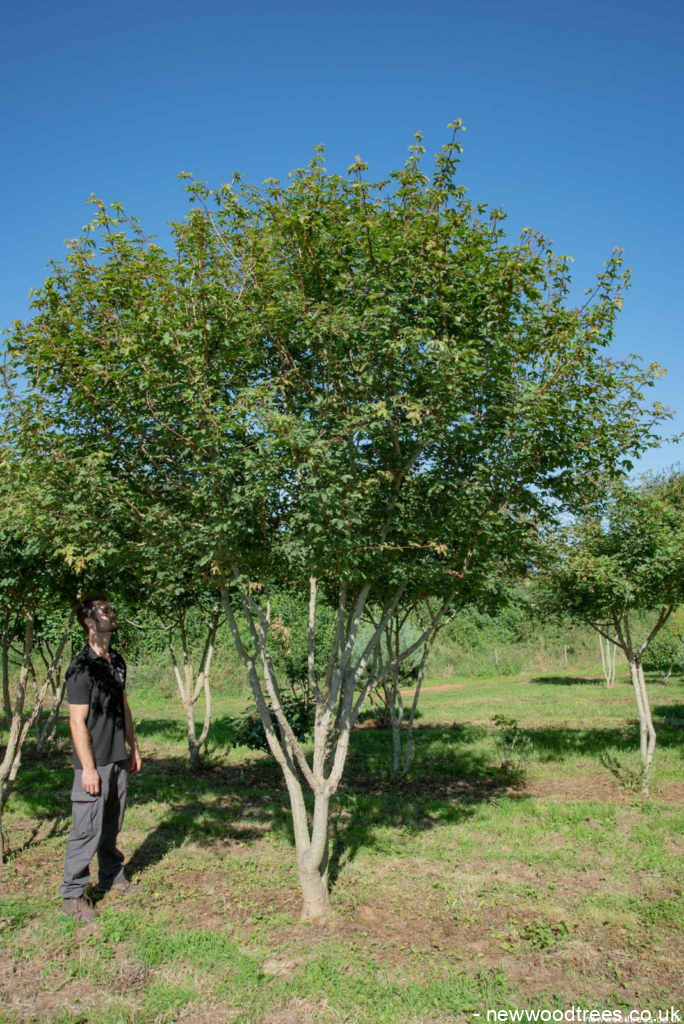
What is a Multi Stem Tree?
In contrast to classic single-trunk trees, multi-stem tree varieties emerge from the ground as several equivalent trunks or stems. These stems may share one root flare or arise in proximity from the roots as shoots. Furthermore, as the tree grows, these multiple stems expand laterally at a similar rate to create a spreading, horizontal silhouette versus a tall, vertical one.
Examples Of Popular Multi Stem Trees Include:
- Field Maple: The Field Maple is a classic example of a multi-stemmed tree, naturally growing several slender trunks and stems rather than a single central trunk. A smaller maple species that reaches heights between 14 metres tall. Furthermore, Field Maples develop multiple ascending branches, giving the tree a rounded, spreading habit.
- White Chinese Birch: Unlike many single-trunk birch trees, the striking White Chinese Birch will naturally form multiple stems as it grows. Several slender, graceful trunks emerge from the base, spreading slightly and turning white as the copper-brown bark exfoliates with age. The multi-stemmed structure displays the ornamental curling and peeling bark texture to full effect.
- Autumn Olive: The Autumn Olive is a prolific shrub, growing 4 metres tall with a similar spread, that adopts a loosely branched, multi-stemmed form. The shrubby tree produces clusters of small reddish fruits with edible flesh.
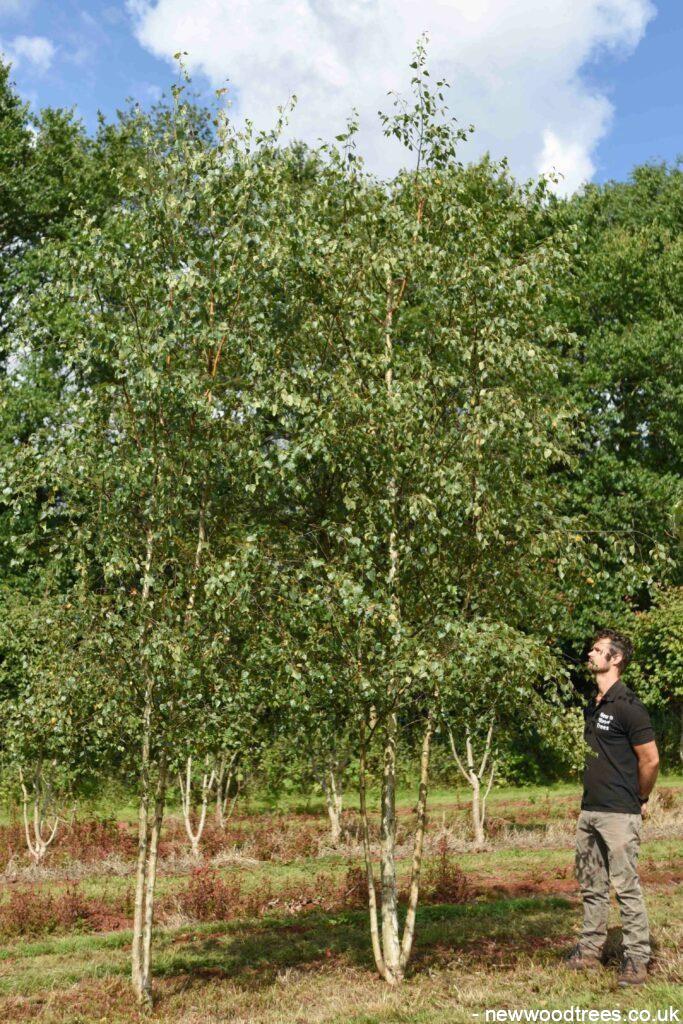
Choosing between the two
The vertical statement of soaring single-stem trees contrasts beautifully with multi-stem varieties layered, undulating effect. Here are essential factors to weigh when selecting which structural style suits your landscape vision:
- Available Space
Single-stem trees claim vertical rather than lateral space, maximising growth upward without overtaking garden beds below. Multi-stem varieties spread wider than their height, requiring ample space to accommodate their broad architecture. Therefore, study mature height and width specifications before placing single-stem and multi-stem trees in your landscape.
- Traffic Tolerance
The sturdy single trunks of trees like Gingko tolerate lawn mower bumps and activity around them well. More delicate multi-trunk trees subject to easy snapping may not thrive in high-traffic zones.
Hence, consider pedestrian flow patterns when siting any tree. Sturdy cross-over branches of shade trees invite exploration. Furthermore, protect the more fragile multi-stemmed specimens by encircling them with benches, decorative fences or accent lighting to prevent soil compaction and damage.
- Seasonal Interest
Multi-stem trees and shrubs often offer vibrant seasonal features from flowers to fruit and fall colour. Their tiered branches display fleeting beauty. Also, conical evergreen trees offer year-round colour but less drama.
Therefore, mix evergreen and deciduous single and multi-stemmed trees for four-season appeal. You could partner weeping cherry trees with spruce for spring blooms and winter structures. Or feature Seven-sons layered stems backing feathery Russian olive for a contrasting duet throughout the year.
- Visibility
A towering Oak or Elm draws the eye skyward, allowing views under and through its canopy. Multi-stem trees like multi-stem silver birch obscure views with their dense overlap of contorted stems and branches.
Furthermore, single-stem shade trees frame focal points while allowing lower garden components visibility. Lastly, plunge gardens, water features and architecture disappear alluringly into the tangle of multi-stemmed trees for tantalising hide-and-reveal.
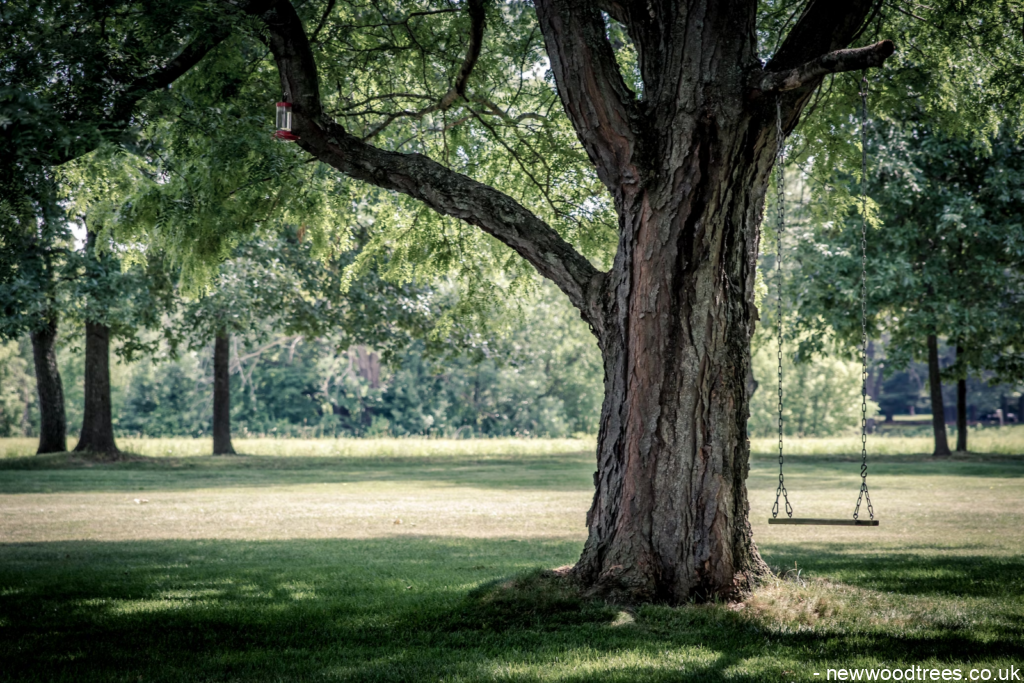
- Shade Quality
Umbrella-shaped shade from a single-stem Maple feels light and airy thanks to high sunny pockets between leaves. The diffused dappled shade beneath a Multi Stem Dogwood or Aralia feels lush but darker on garden beds below.
Caring for Single Stem vs. Multi Stem Trees
Tailored care strategies help both single-stem and multi-stem trees flourish. Consider these key maintenance differences:
- Watering
Single-stem trees establish deep roots to anchor their soaring height. Therefore, water new trees weekly the first year, then taper to infrequent deep soaking. On the other hand, graceful multi-stem varieties drink more frequently, needing moist soil to sustain their layered horizontal reach.
Adding a low ring of compost around the base helps the root zone retain moisture.
For the wide, lateral roots of multi-stem varieties, fruitless weeping mulberry, for example, allow your hose to trickle slowly over a broad area when irrigating new plantings. Use soaker hoses or bubblers for low-volume, deep water delivery tailored to different root architectures.
- Fertilisation
The hungry feeder roots concentrated around single-stem trees respond well to annual feeding. Hence, broadcast fertiliser wider under multi-stem trees with diffuse shallow roots or use slow-release root spikes.
Furthermore, when choosing fertilisers, select all-purpose options labelled specifically for trees to nourish single and multi-stem varieties effectively. Apply fertiliser when trees are actively growing in spring and scratch it lightly into the soil before watering in to maximise nutrient absorption by roots. Also, adding a layer of nutrient-rich compost or aged manure annually helps sustain both feeding root types over longer periods.
- Pruning
When it comes to pruning, limit it to dominant central leader single-stem trees to avoid disrupting their upright shape. Multi-stem trees and shrubs invite renewal pruning to remove older stems, shape form, and encourage new growth.
While multi-stem trees better tolerate the removal of older branches, limit the percentage taken off annually to avoid shock. For tree species that bloom heavily on one-year-old wood, like Vitex, disciplinary pruning stimulates new flowering stems. Alternatively, let other multi-stem plants retain a percentage of older branches to maintain their architectural silhouette. Never prune off over 30% of living tissue at one time.
- Pest Management
During pest management, inspect the full height and root zone around single stems for scale insects hiding in bark crevices. Follow the intricate branching architecture of multi-stem trees to detect mites or nesting insects.
Moreover, it’s crucial to learn to recognise both stand-out infestations and very subtle initial signs of insects or disease. Catch pest problems early before populations explode. Also, rubbing alcohol or neem oil treats many soft-bodied invaders on contact when caught early. Preventatively spray horticultural oils that smother overwinter eggs of recurrent pests like mites or aphids. Support beneficial predatory insects with nectar plants to help control multi-stem and single-stem trees naturally.
- Staking & Supports
Newly planted single-stem trees need staking for 3-5 years in windy areas, so their roots establish anchorage. On the other hand, stake multi-stem trees only while roots develop, then remove supports so stems can flex and strengthen.
Additionally, remove tree wrap supports every spring and re-secure any stakes that loosened over winter. This protects bark from moisture and pests underneath. For multi stem saplings, tie loose stems together instead of stacking vertically to allow some flex and movement. Monitor for signs of girdling or rubbing where ties contact delicate branch bark.
Conclusion
Whether your landscape vision trends towards palatial Maples or romantic Birches, single-stem and multi-stem trees both offer timeless beauty. The upright grandeur of Oaks commands attention next to the voluptuous curves of Crape Myrtles. Blended, they create dynamic tension and interest.
Thoughtfully placing tall trees and grouping plants together can create a beautiful, healthy garden that nourishes you for years. Furthermore, carefully choosing vines, decorations, and compatible plants can make any garden a vibrant work of art celebrating trees.






